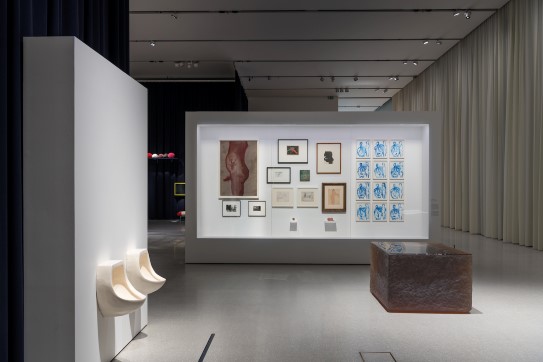Bourgeois and Robert Grober. Liquid sexuality and the AIDS crisis

Transcription
Actor, portraying Robert Gober
Every other day, it seemed someone I knew, or someone a friend of mine knew, became seriously ill. And it happened so quickly, and most of them were gay men. Young men were dying all around me of unknown causes, but the rest of the world seemed to either turn a blind eye to it happening, or be disgusted by it.
Narrator
This is a quote from the American artist Robert Gober when discussing perhaps some of his most famous works – installations with sinks.
Elin-Therese Aarseth
In a dream, Gober had seen a white, shiny porcelain sink with running water in brilliant sunlight. He interpreted this dream as a contrasting revelation to the terrifying reality; because out there in the real world, the AIDS epidemic was raging.
Narrator
This is Elin-Therese Aarseth, art historian at the National Museum.
Elin-Therese Aarseth
The first were made in 1984; shaped in plaster, wood and steel, and then painstakingly painted. 2 Urinals, from 1986, are variations of Gober's sinks.
Louise Bourgeois was also actively involved in the AIDS crisis. Her first AIDS-related work was made in 1989. In this exhibition you see a later work, namely a small dildo-like sculpture lying in a box.
In 1994, Bourgeois collaborated with six other artists to raise money to benefit ACT UP (Aids Coalition to Unleash Power).
Inspired by the pop artists, they made a box with seven different objects in it, all of which in one way or another are about the body. The idea was to break the silence surrounding the AIDS crisis, and counter the stigma of gay sex and sex in general, with art that explicitly celebrated the body and sexuality.